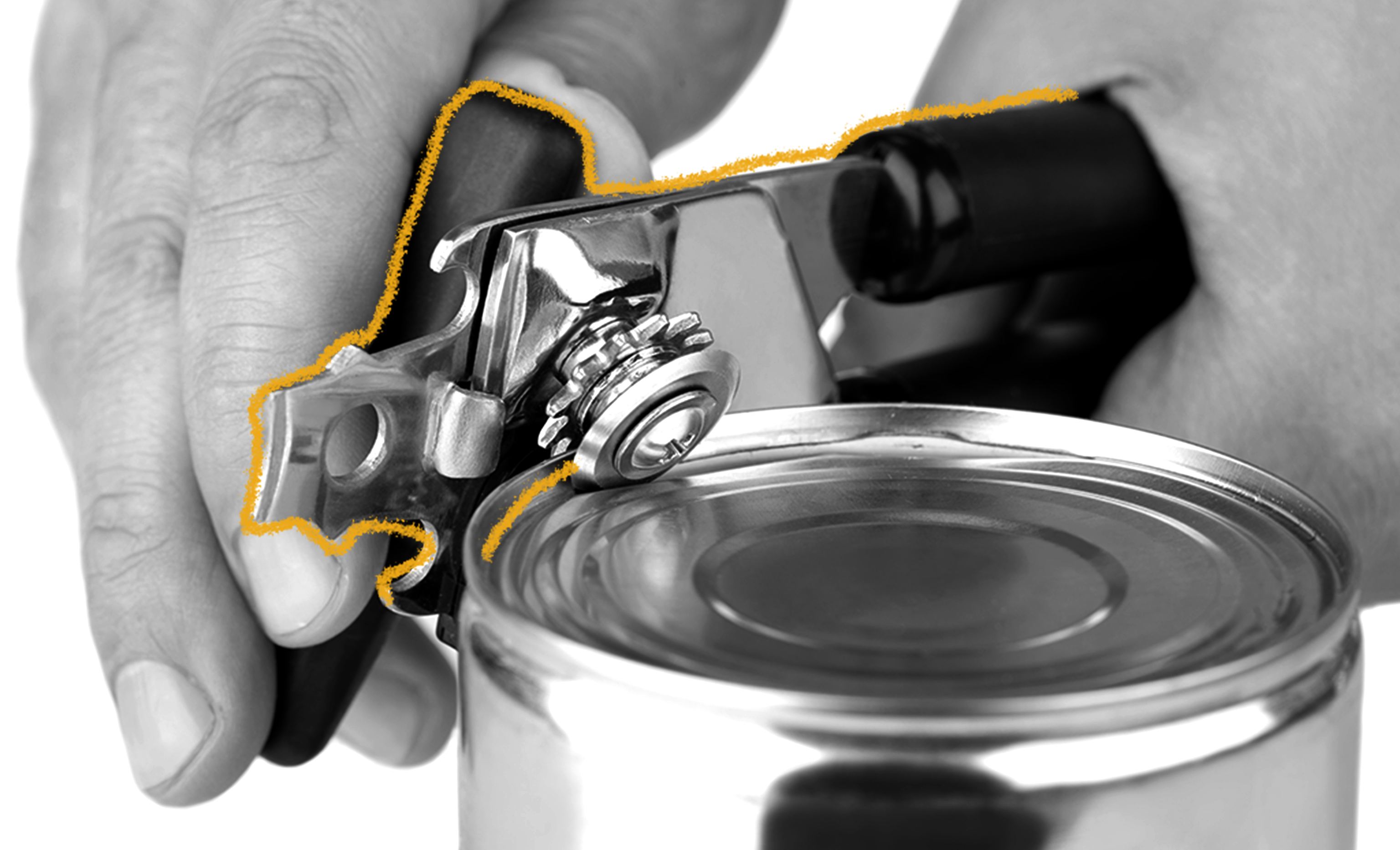After France announced Nicholas Appert’s groundbreaking invention of canning in the early 1800s and England’s Peter Durand improved upon the idea by using metal cans instead of glass ones shortly thereafter, the problem of how to open the cans arose. Early solutions involved a hammer and a sharp tool. These crude methods were necessary because early cans were made of a thick metal. But by the 1850s, cans were starting to be produced using a much thinner steel. In 1858, the first patent for a can opener was issued to Ezra Warren of Connecticut. Warren’s design utilized a pointed blade with a guard to keep it from going too far into the can. It was referred to as the “bayonet and sickle” and was used widely by soldiers during the Civil War in America. Eight years later, J. Osterhoudt created an unwinding-style can opener that was built into the can itself. (Notably, some sardine cans today still use a similar mechanism.) Around 1870, William Lyman of Connecticut came up with the rotary can opener, which served as the basis for today’s can opener. The modern can opener and its recognizable toothed-wheel crank design was invented by Charles Arthur Bunker in the 1920s. (Notably, it remains the standard design today.) The first electric can opener was patented in 1931. While some cans today use a pop-open style lid, most canned goods still require a can opener, and so these tools remain an all but indispensable part of modern life.

Your go-to guide for weird history facts
Subscribe to the FREE daily email that makes learning about history fun.


